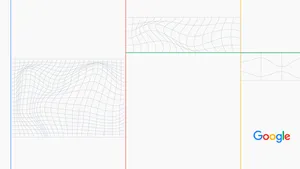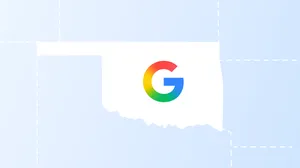From soil to supper: How technology influences your dinner
What does artificial intelligence have to do with the dinner on your plate? It might seem like they’re unrelated, but technology like AI contributes to your everyday life, including the food you eat. Farmers around the world are using AI-infused apps like FARMWAVE and PlantVillage to diagnose and treat pests that might otherwise destroy an entire harvest.
We’re working to make it easier for anyone to manage and learn from data—like allowing developers to use machine learning with TensorFlow and models we’ve released on GitHub. Today, Google has over 2,000 open source projects. In the food space, our open source tools have supported the development of programs that sort cucumbers and track and monitor the health of dairy cows.
But we wanted to learn even more about how technology is influencing our food. That's why over the last year, we’ve met with experts across the nation’s food supply chain to discuss and co-author the Refresh: Food + Tech, from Soil to Supper report. The report covers the important role technology plays in the production, distribution and consumption of our food. After working on the report over the past year, two major themes became clear.
Technological breakthroughs happen everywhere
We recently hosted a launch event in Chicago where we were joined by former Secretary of Agriculture Tom Vilsack, who worked at the USDA during a dynamic time for technology in agriculture. At the time, precision farming and other smart-farm tech were changing the agricultural landscape—but in many ways, these emerging technologies are a natural fit with life on the farm. Secretary Vilsack observed parallels between the farm and Silicon Valley, noting that innovation and risk-taking are inherent in the business of farming as well.
Former Secretary of Agriculture Tom Vilsack talks about technology in agriculture with Danielle Nierenberg of Food Tank

Examples of using technology on a farm run the gamut, from automated data analytics to wearables. For example, Refresh Working Group member Melissa Brandao created HerdDogg, a health tracking wearable for cows, to help dairy farmers monitor the day-to-day health of each individual cow in their herd. And working group member Amanda Ramcharan uses plant-spotting drones to evaluate soil health and predict weather patterns that help to inform standards for agricultural sustainability.
Diverse perspectives are crucial
For new technologies to improve the food supply chain, we have to make sure that a variety of communities and stakeholders are involved in the process from the start. If AI is meant to be a useful tool for food production, distribution and consumption, these systems must be designed to meet the day-to-day needs of farmers, retailers and food workers.
Panel discussion with myself from Google, Don Bustos of Santa Cruz Farm, Danielle Nierenberg of Food Tank and Ankita Raturi of the USDA’s Agricultural Research Service

For example, technology has to be reliable in order for it to be useful for smaller operators. Don Bustos of Santa Cruz Farm in Española, New Mexico was an early adopter of solar technologies for year-round food production. His community depends on his harvest as a critical food source, so he pointed out that any AI applications on his farm must be both affordable and reliable, or he risks a poor crop yield.
And it has to bring people with diverse perspectives together to work toward new solutions. Refresh Working Group member Craig Ganssle, who created the communication platform FARMWAVE, understands that community is critical to the success of any technology. This platform provides farmers with a real-time community of peers worldwide, so that they can pool their expertise and learn from one another as they make critical decisions on their farms.
We couldn’t have learned about the complexities of our nation’s food system without the participation of this engaged group of farmers, small business owners, researchers, nonprofit leaders and community organizers. Sign up for updates to join the conversation next year, and be the first to learn about our next event at SXSW 2019.





